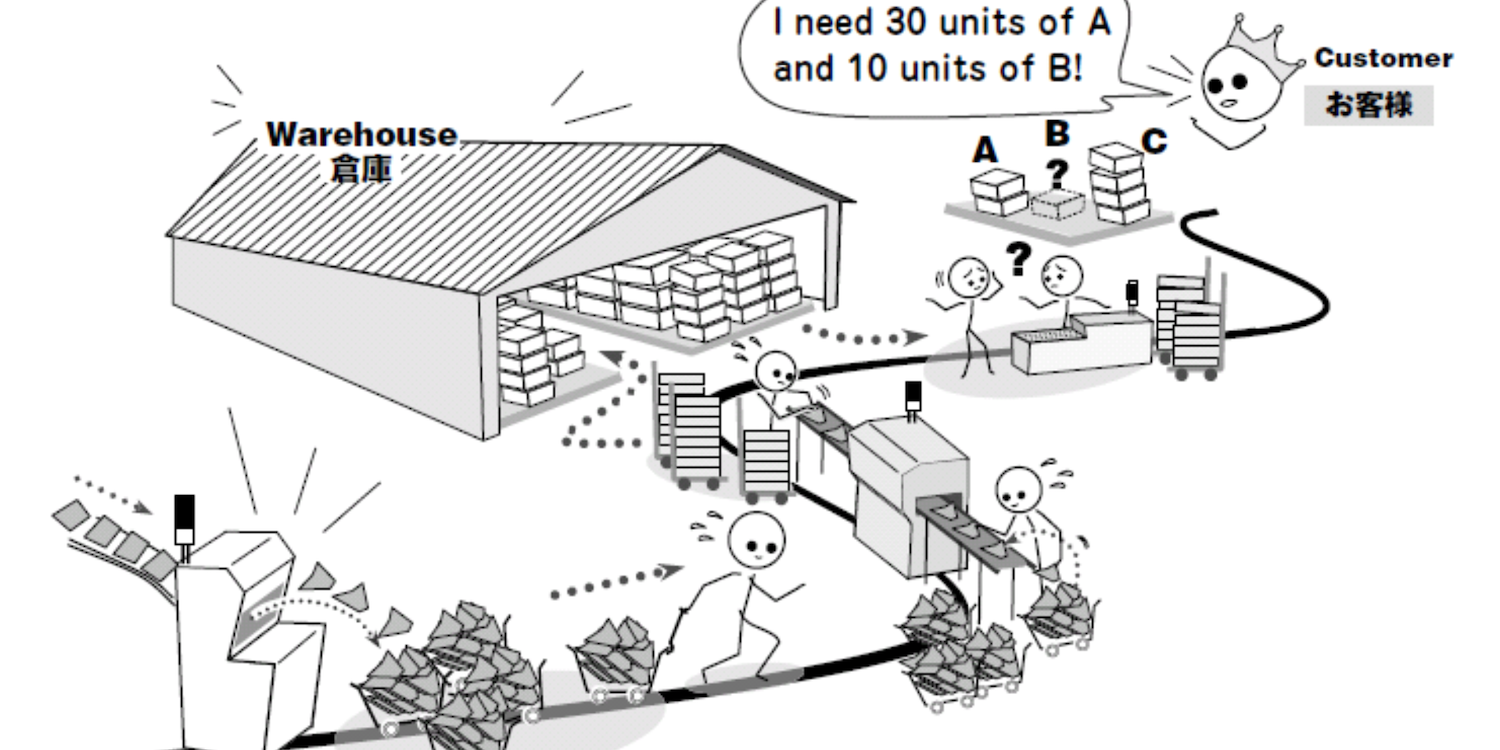
Panic buying and the Coronavirus
FEATURE – With the Covid-19 emergency, people across the world have been stockpiling on household products, exposing the shortcomings of batching-prone supply chains.
Words: Dave Brunt, CEO, Lean Enterprise Academy
Across the globe, the news has been awash with stories of empty supermarket shelves and shoppers bulk-buying staple cooking items like pasta, rice and tinned produce (tomatoes, baked beans, sweet corn, etc) and personal hygiene and medical supplies like paracetamol, hand sanitizer and toilet paper. To many of us, these reports were definitive proof that, in the face of the Covid-19 pandemic, panic has already set in.
This boom in sales (UK supermarket chain Morrisons said that same store sales were up 15% in the past two weeks) is larger than the peak retailers typically enjoy at Christmas. This may be good news for them, but it isn’t for the supply chain, for sensible customers who purchase only what they need or for financially or medically disadvantaged people who can’t buy in bulk or get out to the shops.
As lean thinkers, we want to ensure everyone has the products they need, when they need them, in the quantities needed. If individuals in our society buy more than they need, then some people will go without – either in the short term until items are replenished or in the longer term if they aren’t there at the right time when items come back into stock. Before the Coronavirus outbreak, our supermarkets system operated well: we have high levels of availability and can get most of our shopping done whenever we want to. So, what compromised the availability of items and what should we do about it?
During our work to help Tesco redesign its supply chain in the late 1990s, we learned that about 40 items were purchased on a typical trip to a supermarket. And that in a typical store, individual items were kept in the right place on the shelves in around 98.5% of instances. This level of service sounds acceptable, until you do some simple math: to successfully complete a shopping trip, the consumer needs to find all 40 items. Because each item is likely to be available 98.5 times out of 100, it follows that all items are available only about 55% of the time (0.985x 0.985 40 times = 55%). That means that one in every two trips we will be looking for something that is not available.
Of course, on a trip to the store, consumers can find substitutes for the items that they want (for example, you can replace your favorite breakfast cereal with a different kind or an own brand alternative). The advent of online shopping and click-and-collect processes has made it even clearer that substitution is one of the ways supermarkets manage out-of-stock items. But, when exceptional circumstances occur (and I think we are all agree we are living an exceptional situation), a big spike in demand can easily result in empty shelves across entire ranges of products.
Retailers have worked hard to improve on-the-shelf availability and our “basket fulfilment” – the number of times we leave the store with all the items we need – by re-designing physical flows and stabilizing them, by compressing time in both the physical and information flows to deliver smaller quantities to each store more frequently, and by more closely mirroring what has been sold to customers. In a bid to provide more value for customers, they have also collaborated with their supply chain partners.
Seeing empty shelves as I shopped for essential items (we were actually getting low on toilet paper and several weekly staple items), I was reminded of the lessons learned during the supply chain simulation, the “beer game” so eloquently written about by Peter Senge in his 1990 book The Fifth Discipline. In Chapter 3, titled “Prisoners of the system, or prisoners of our own thinking?”, Senge explains the actions taken by a retailer, wholesaler and brewery when sales of beer go up unexpectedly. Demand is amplified upstream. The growing demand can’t be met. Orders build throughout the system. Inventories are depleted. Backlogs grow. Finally, the beer arrives en masse while incoming orders suddenly decline. By the end of the experiment, almost all the players are sitting with large inventories they cannot sell.
While the structure of the supply chain has been improved dramatically over the last 20 years, retailers could go further. Items whose replenishment takes place more directly in line with demand will face less stock-outs. Conversely, the larger the batching in the information flow (weekly ordering is a larger batch than twice weekly, than daily), the higher the chance of stock-outs. A quick look at a supermarket retailer website shows that toilet paper is sold in multi-packs – 24 rolls, 16 rolls, 9 rolls and 4 rolls per pack. I suspect that few households (under normal circumstances) order a pack per week of the larger pack sizes. Their weekly consumption will be less than the number of rolls in the larger pack sizes. Therefore, their demand will be much lumpier for the retailer. You only have to look at the aisle for toilet roll and household tissues: each pack is usually placed on the shelf manually. (Now compare this to similarly bulky items, such as milk or soft drinks, which are wheeled into place with re-usable trolleys.) This system reduced the touches and time across the whole value stream, making smaller batch replenishment economical. The logic from a faster-moving item (like milk) hasn’t yet made it across to toilet paper, but it probably should.
When I went shopping last week, buy-one-get-one-free offers were still available on tinned items. This (by itself) injects excess demand into the supply chain. It’s often been argued by retailers that they promote to create additional sales, but the reality is that such mechanisms mainly switch sales, rather than create additional demand.
There are structural issues that can be addressed to improve availability. Here's a few suggestions:
- To understand the structure of the supply chain, one needs to map the entire system – looking at both the information flows and the physical flows. The consequences of actions on one point in the system for the other points in the system will then be clearly revealed. Better visibility is essential in managing supply chains.
- Supply products in smaller batches and deliver more frequently (rather than supply toilet paper in bigger batches and deliver it less frequently). Real demand and the true performance of the value stream in meeting that demand can then be clearly understood.
- Remove all promotions.
Of course, in times of crisis, structural change (while necessary) is not sufficient. We also need to design the system to engage people and change their behaviors – that is, to change how they make decisions. When stock-outs happen, people panic. As a consequence, when the products become available again, buyers take more than they need. Seeing empty shelves appears to bring that behavior out in people.
The obvious thing to do in times like this is to limit the number of items people can purchase, so that they can’t take more than they use (or need.) On Wednesday last week, for instance, Tesco announced it would limit customers to three items each across its entire product range. Of course, such “rationing” needs to take into account that some shoppers will be purchasing for others who aren’t able to get to the store. History may well show that the rationing system that was centrally managed during World War II would be more effective than a distributed model where supply decisions are left entirely to the retailers. What’s needed at this critical juncture is an effective system rather than effective individual firms and supply chains.
We live in unbelievably uncertain times. In the midst of all this uncertainty, however, I believe that Lean Thinking is still shining like a beacon in a dark night. In fact, I think it’s never been more applicable and, indeed, required. The only way out of this crisis is working together as a team for the benefit of all, not just of ourselves – whether that means not supplying or buying in batches or staying at home to avoid sending our healthcare systems into overload.
THE AUTHOR

Read more


INTERVIEW - On April 18th, Lean Global Network and KD Consulting will hold a not-to-be-missed event in Ho Chi Minh City for the Vietnamese lean community. In this Q&A, Tony and Khoa tell us what to expect from the summit.


FEATURE – The release of Christoph Roser’s new book All About Pull inspires John Shook to discuss the origins and true meaning of “pull” and why it is incorrect to blame JIT for the shortcomings of global supply chains.


CASE STUDY - Three successful improvement projects at a hospital in Guangzhou are proving that lean healthcare in China is an opportunity that the sector cannot afford to miss.

